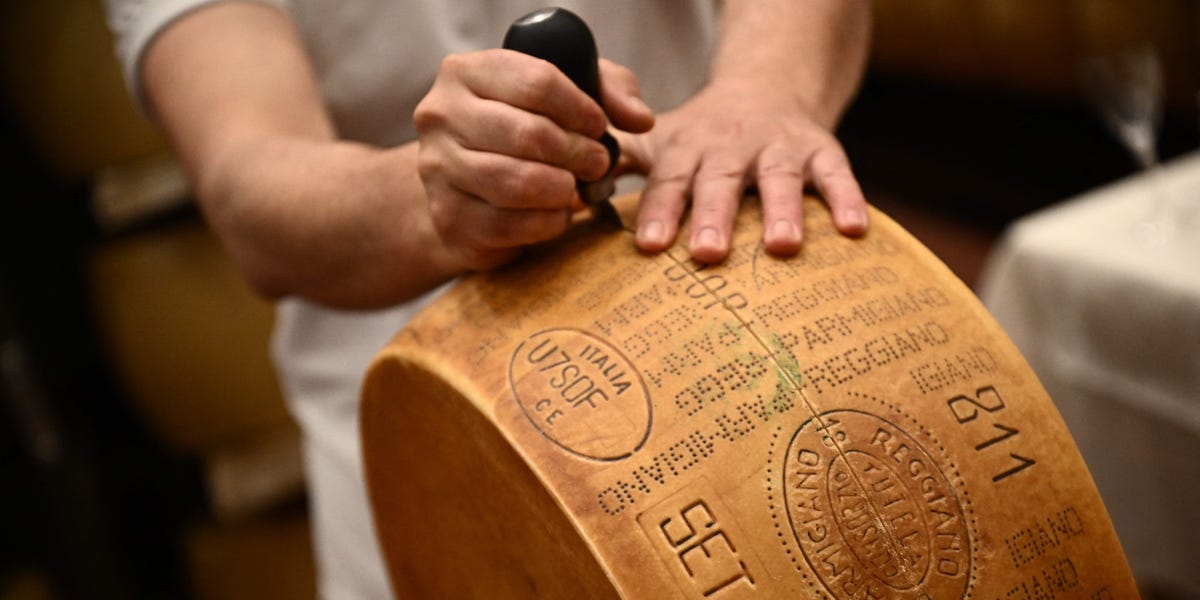Parmigiano-Reggiano makers are putting edible microchips the size of a grain of sand into their 90-pound cheese wheels to combat counterfeiters::Italian Parmigiano-Reggiano makers are using microchips to verify the authenticity of their products and thwart scammers.



Not really putting them “into” their cheese, just the labels that bind with their outer casing of the cheese wheel. Still neat.
Okay…
That still begs the question, why are they considered edible? Are people eating the labels? 🤔
Yes. Casein is milk protein. I buy a lot of aged cheese and sometimes I’m lazy cutting it up and leave some casein on.
Interesting. So how long before you become an official scannable wheel of cheese? 🤔
Could he claim to officially identify as a parmigiano reggiano cheese?
Not sure, we should cut him open and taste to confirm.
Probably because otherwise people would be like “yOuRe PuTtInG mEtAl IN mY cHEeSe”
Even if it’s just the size of a grain of sand, I don’t want to worry about biting down on that.
I would too, but it goes in the shell/outside that goes around the cheese wheel, not in the cheese itself
I’m just saying, there’s a reason we’re not allowed to have kinder surprise eggs in the US. If we can find a way to hurt ourselves with food we will. And then we will sue.
I mean… yeah. That is a very reasonable concern.
It is if it’s anywhere that’s eaten it is, but the outer rim of the cheese wheel doesn’t get eaten
Except it is very common to boil cheese rind for broth. And prolonged exposure high temperatures tend to break down pollutants into even more reactive forms as well as draw them out into solution. Worse if it’s in like a commercial steam oven or pressure cooker that can get much higher than 100 C, you know, like many professional restaurants make a point of using.
I doubt it will be that easy to identify and scrape off, because that would defeat the point, probably hidden deep within the layers. It says it can’t be read remotely so very unlikely it’s just an off the shelf RFID sticker you can easily see and peel off. I also doubt a lot of people will know it’s there and that it needs to be removed in the first place, or they’ll take their word for it that it’s edible even though they are absolutely in no position to make that claim and have definitely not done the rigorous medical research/testing to actually justify a claim like that.